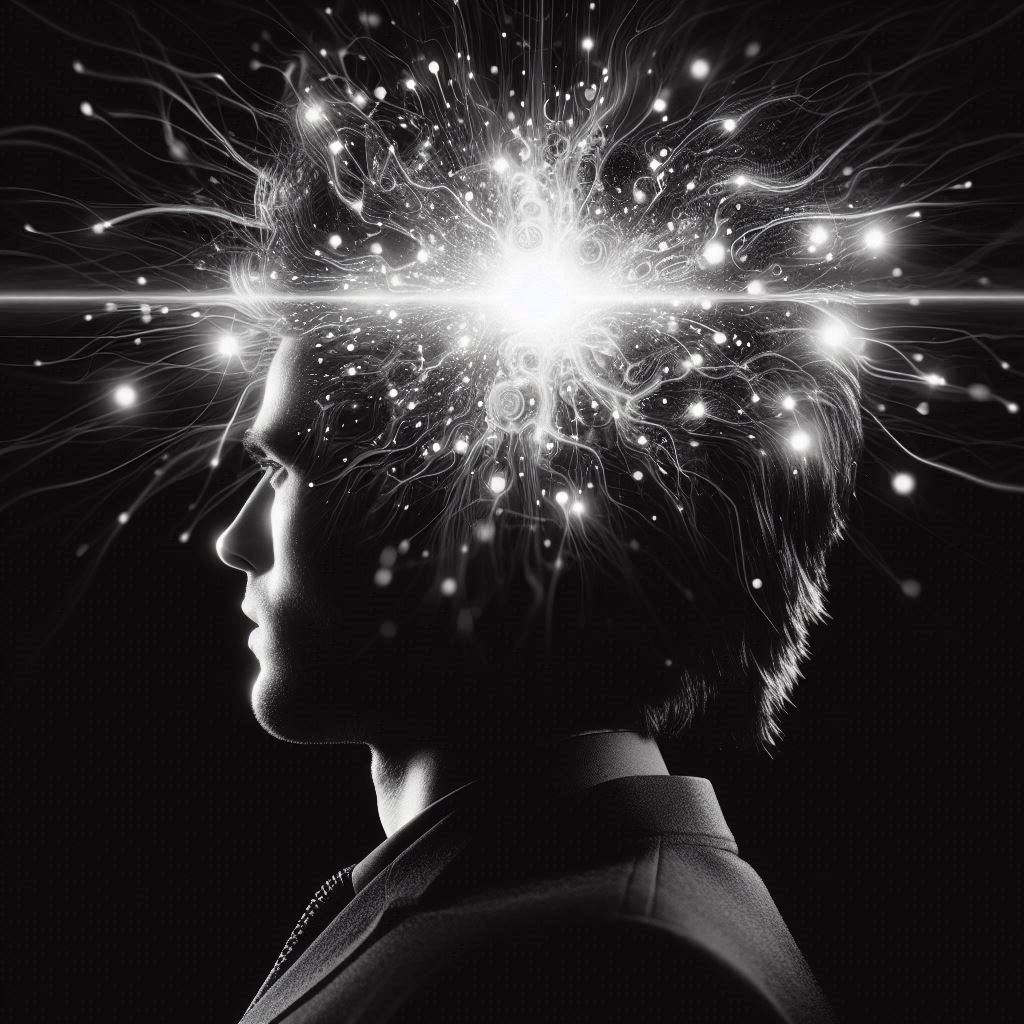Understanding which parts of the brain regulate emotions is crucial for comprehending human behavior.
The limbic system, often referred to as the emotional brain, plays a significant role in this complex process. Other key structures, such as the amygdala, are central to emotional responses, influencing everything from fear to happiness.
By unraveling the functions of these brain parts, we can better grasp how emotions shape our interactions and decisions. Let’s explore how these areas work together to navigate the intricate world of emotions and mental well-being.
The Limbic System: The Core of Emotional Processing
The limbic system acts as the brain’s emotional core. It’s essential for processing our most primal emotions, memories, and motivations. Understanding its components helps us see how this system ties our emotional responses to memories and motivations, influencing our everyday decisions and interactions. Let’s break down the key players within this intriguing network.
Key Structures within the Limbic System
The limbic system consists of several interconnected structures. These parts work together to regulate emotions and influence behavior, but what are the key structures involved?
- Amygdala: Often described as the brain’s emotional alarm system, the amygdala is vital for detecting responses to threats. It’s integral in processing emotions like fear, anxiety, and aggression. Think of it as the smoke detector of your emotional world, instantly alerting you to danger.
- Hippocampus: This structure plays a pivotal role in forming new memories and linking them to emotions. Imagine it as the brain’s memory organizer, ensuring emotional experiences are appropriately cataloged for future reference, impacting how we respond to similar situations down the line.
- Thalamus: Serving as the brain’s relay station, the thalamus channels sensory information to the appropriate areas of the brain. It provides a crucial link between the spinal cord and the cerebral cortex. Consider it the switchboard operator, directing emotional and sensory data to the right place.
Together, these structures form a complex network that influences how we feel and react.
Functions of the Limbic System
The functions of the limbic system extend well beyond basic emotional processing. This network also plays a role in a variety of other crucial brain functions:
- Memory: The hippocampus’s interaction with the rest of the limbic system is crucial for forming long-term memories. This connection makes learning from past experiences possible.
- Motivation: The limbic system directs behaviors that are necessary for survival, such as eating and reproduction. It’s like having an internal compass that steers us toward satisfaction and fulfillment.
- Emotional Responses: The amygdala and other limbic structures are at the heart of how we experience and express emotions. They determine how we respond to emotional events—from joyous occasions to threatening situations.
Recognizing these core functions helps us appreciate the limbic system’s role in our emotional lives, much like a conductor orchestrating various aspects of human behavior and emotion.
The Amygdala: The Fear and Anxiety Center
The amygdala is a small, almond-shaped cluster of nuclei located deep within the temporal lobes of the brain. Known as the brain’s emotional alarm system, it is primarily responsible for processing emotions such as fear and anxiety. Imagine it as the sensitive part of your car’s security system, always ready to alert you of any perceived threats. Its role is pivotal in how we react emotionally to the world around us.
Amygdala’s Connection to Memory
The relationship between the amygdala and memory is profound. This connection works to link emotions to the memories we form. When an experience is emotionally charged, whether due to joy, sadness, or fear, the amygdala influences the hippocampus to enhance memory encoding and retrieval. This means emotionally significant events, like a cherished birthday or a traumatic incident, are more vividly remembered compared to mundane daily activities.
Research suggests that the amygdala’s involvement in memory is twofold:
- Emotional Tagging: It “tags” experiences with emotional significance, making them stand out in our memory.
- Memory Consolidation: In collaboration with the hippocampus, it helps solidify these emotional memories, ensuring they are accessible when needed.
Thus, the amygdala plays a critical role in how we recall past experiences, shaping our responses based on previous outcomes.
The Amygdala’s Response Mechanisms
The amygdala is integral to the fight-or-flight response, a survival mechanism that prepares the body to confront or escape from threats. When a potential threat is recognized, the amygdala springs into action, sending distress signals to the hypothalamus. This triggers a cascade of physiological changes:
- Increased Heart Rate: Blood pumps faster to supply oxygen to muscles, readying the body for quick action.
- Elevated Breathing: Breathing rate increases to enhance oxygen intake.
- Adrenaline Surge: The adrenal glands release adrenaline, sharpening senses and boosting energy.
This rapid response is essential for survival, as it helps individuals react promptly to danger. However, in modern life, where threats are often psychological rather than physical, this response can sometimes be triggered unnecessarily, leading to anxiety or stress—what some experts call an “amygdala hijack.”
Understanding the amygdala’s role and its mechanisms can shed light on emotional responses related to fear and anxiety, and help in managing them more effectively. This knowledge assists not just in recognizing these feelings, but in making informed decisions on how to address them.
The Insula: The Interoceptive Center
Within the brain’s labyrinth, the insula, often overlooked compared to its more famous neighbors, plays a pivotal role in how we perceive and process emotions. Nestled deep within the cerebral cortex, this tiny region acts as a crucial hub for our emotional and physical experiences.
Insular Cortex Functions
The insular cortex is pivotal in bridging the gap between our bodily sensations and emotional awareness. It translates physical states into emotional experiences, allowing us to sense our body’s internal condition and relate it to our emotions. Whether it’s a flutter of joy or the pang of anxiety, the insula helps us connect these emotions with their physiological roots.
Imagine you’re about to give a speech. That churning sensation in your stomach, the quickening of your heartbeat—these are signals your insula helps interpret. It creates a map of your body’s internal state and connects it with your experience of nervousness or excitement.
In scientific circles, the insula is seen as central to interoceptive awareness—our ability to understand and interpret internal bodily sensations. This includes a variety of body signals such as hunger, thirst, and even the nuance of complex emotions. The insula is also instrumental in processing subjective feelings, serving as a bridge between bodily sensations and emotional experiences.
Impact on Empathy and Social Emotions
The insula shines when it comes to empathy and social emotions. This region helps us step into others’ shoes, understanding and sharing their emotions. The insula processes mirrored emotions, making it possible for us to feel sadness when we see someone cry or joy when others laugh.
Empathy—the capacity to understand what another person is experiencing—is heavily linked to the insula. Scientific studies have shown that the anterior part of the insula (AI) is activated when we see others in pain or distress, suggesting its role in empathetic responses. This area helps us tune into and resonate with others’ feelings, creating a sense of shared humanity.
On a social level, the insula contributes to how we interpret social cues and respond emotionally. Whether it’s feeling compassion for a friend’s plight or joy at their success, the insula plays a key role in these nuanced social interactions. It helps bridge emotional experiences with our understanding of the world, allowing us to connect meaningfully with others.
Understanding the insula’s role in emotions not only unravels the complexities of the human psyche but also emphasizes the interconnectedness of our cognitive and emotional lives. Through it, we gain insight into our own emotional landscapes and, importantly, enhance our empathy towards others.
Left and Right Brain Hemispheres: Emotional Dichotomy
Our brains are fascinating, especially when it comes to emotions. It seems each hemisphere plays a unique role in how we feel. Let’s explore how the left and right sides contribute differently to our emotional experiences.
Left Hemisphere: Approach Emotions
The left hemisphere is often associated with positive emotions. Think of it as the bright, sunny side of our brain. It helps us engage with the world around us through emotions like happiness and pride. How does it do this?
- Positive Engagement: This side of the brain is more active when we experience emotions that encourage us to approach situations or people. When you’re feeling proud of an achievement or happy about good news, your left hemisphere is hard at work.
- Language and Logic: The left side is also involved in processing logical and analytical tasks. This might be why it’s linked to emotions that require a clear, orderly perspective, like optimism. It helps us find words to express joy and gratitude.
- Motivation and Drive: Positive emotions often lead to increased motivation, and the left hemisphere supports this by driving action-forward behaviors. When you feel excited about a new project, thank your left hemisphere for that boost of enthusiasm.
Right Hemisphere: Withdrawal Emotions
On the other side, the right hemisphere deals more with negative emotions. It’s like the cautious, protective side of us, staying alert to potential threats or sadness. This hemisphere plays its own critical part in our emotional landscape.
- Emotional Vigilance: Often dubbed the center for withdrawal emotions, the right side is linked to feelings like fear and sadness. It helps us recognize when to retreat or exercise caution, acting as our emotional watchdog.
- Creative and Intuitive: This hemisphere is known for creative and intuitive processes, which may explain why it handles complex emotions that aren’t easily described with words. It processes how we feel rather than what we feel.
- Social and Emotional Cues: The right hemisphere is better at interpreting nonverbal cues and empathy. It helps us understand the tone of voice or the sadness in a friend’s eyes, becoming a cornerstone for deep emotional connections.
While these hemispheres take on different roles, they work in tandem to shape our emotional experiences. Each side, whether ushering us toward joy or safeguarding against negativity, adds a stroke to the colorful canvas of our emotional lives.
Integrating Understanding of the Emotional Brain
Understanding our emotional brain isn’t just about pinpointing its physical structures. It’s a process of seeing how these parts interact, shape, and reflect our emotional experiences. By integrating our understanding of the brain’s emotional centers, we can gain insight into the complex tapestry of human emotion.
Harmonizing Brain Functions
The brain’s emotional structures work like an orchestra, with each component playing a unique part. This integration is key:
- The amygdala serves as the alert system, preparing the body to respond to threats.
- The insula translates physical sensations into emotional experiences, linking body and mind.
- The hippocampus ties memories with emotions, defining how past experiences influence present feelings.
Together, these aspects form a harmonious blend, facilitating emotional intelligence and resilience.
Emotional Intelligence and Well-Being
How does this integration impact our daily lives? It enhances emotional intelligence, allowing us to:
- Recognize Emotions: Understand what we and others are feeling.
- Regulate Responses: Manage reactions to emotional triggers.
- Build Empathy: Connect deeply with others by perceiving their emotions.
By interpreting the world through these emotional lenses, we gain clarity and empathy, enriching both personal well-being and social bonds.
Practical Implications for Personal Growth
Incorporating knowledge about the emotional brain into everyday life can be transformative. It empowers individuals to:
- Manage Stress: By understanding triggers, one can develop coping strategies.
- Enhance Relationships: Better interpret emotions to improve communication.
- Promote Self-Awareness: Reflect on emotional responses to foster personal growth.
As we learn to balance these emotional components, we can achieve greater life’s depth and richness. Understanding this complex network not only strengthens personal development but also shapes our interactions with the world.








